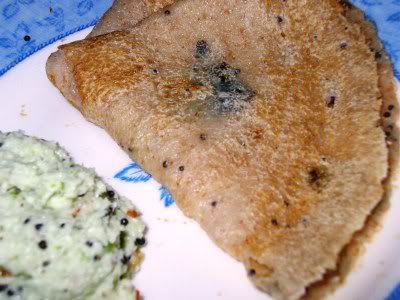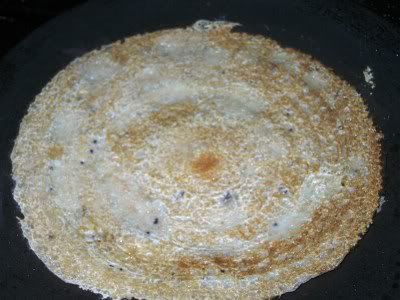I also added some traditional sultanas and cashewnuts to the halwa, although I guess most nuts (maybe not peanuts, though) would taste just as good. Oh, and the only calories in it come from the ghee, because I used Splenda instead of sugar. There's just no way to compromise on the ghee, unfortunately, because of the flavour and aroma it imparts.
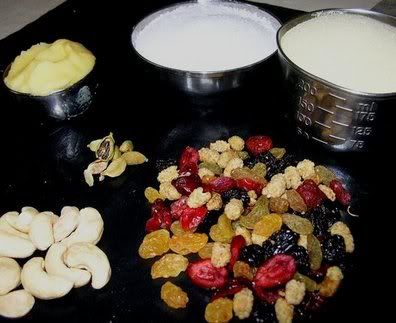
Clockwise from bottom right: Mixed dried berries (cranberries, strawberries, sour cherries and sultanas), cashewnuts, cardamom, ghee, Splenda and suji.
Suji halwa is a quick, fuss-free sweet to make - it's also homey and sort of soothing. Or maybe that's because I associate it with memories of home.
This halwa is nicest eaten hot (the microwave comes in handy here, if you're not eating it fresh). I didnt make mine the usual formless mass of halwa - I spread it on a lightly greased plate straight from the cooking pan, and cut it into squares. The berries looked like little jewels studding the little squares of halwa. They looked pretty and were the perfect size to satisfy my undemanding sweet tooth, one square at a time. And did I say they looked pretty?
Recipe for: Suji halwa with dried berries
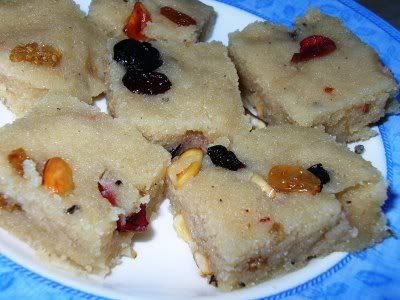
Ingredients:
1 cup suji
3/4 cup sugar or Splenda
1/4 cup ghee
3/4 tsp cardamom powder
1/3 cup mixed dried berries and sultanas
2 cups water
Method:
1. Heat 1 tsp of the ghee in a small pan and fry the berries and nuts until the nuts turn golden. Remove from the hot pan (to stop them browning further) and reserve.
2. Melt the remaining ghee in a wide pan.

3. Add the suji to the ghee and roast it on medium-high heat, stirring frequently, until the suji starts to turn a darker colour (about 10 minutes) and gives off a nice roasting aroma.
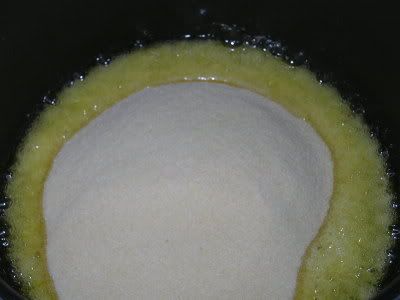
4. The suji is done when it becomes wet-looking and the ghee begins to separate from the mixture.
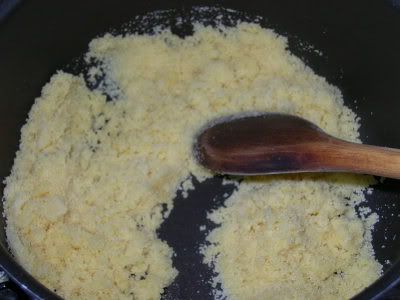
5. Now is the time to add the berries and nuts, and the sugar. Stir it all into the roasted suji mix.

6. Add the cardamom powder and two cups water to the pan and stir well and frequently, making sure there are no lumps.
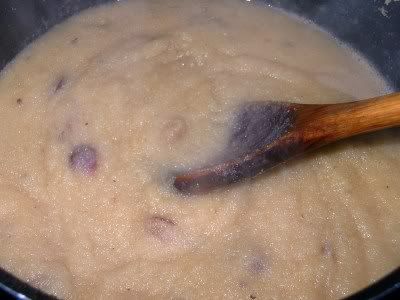
7. Keep stirring until the suji absorbs the water and the mixture pulls away from the sides of the pan. At this point, stirring will be difficult as the halwa will have become a soft mass. Turn off the heat. The halwa can be served rightaway in cups.
8. If you want to make serving pieces like I did, spread the hot halwa on a lightly greased flat plate, patting it down quickly and carefully with a wetted palm. Cut into pieces when it has cooled a little.
The halwa stays good for 2 days, and can be re-heated in the microwave prior to serving.

